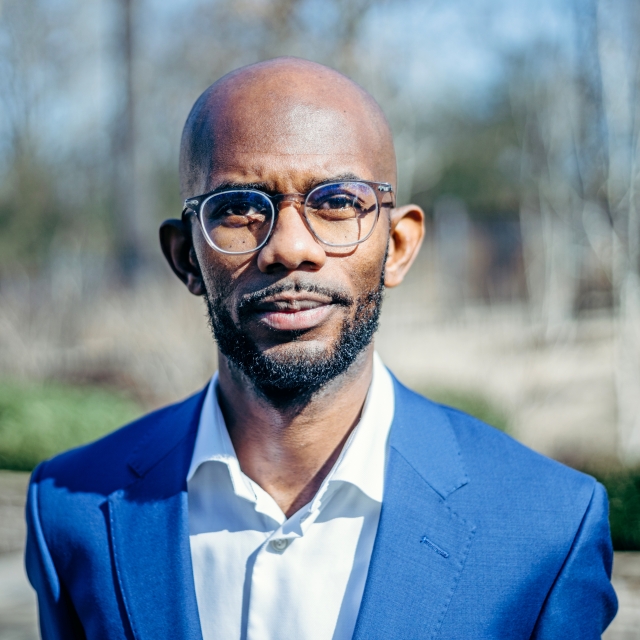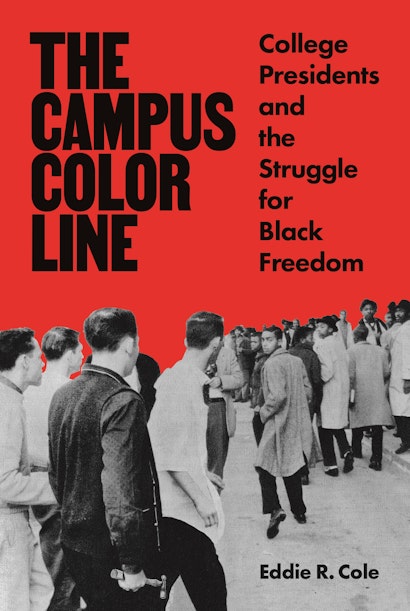College presidents have described the uncertainty within higher education due to the coronavirus pandemic and subsequent economic downturn as “uncharted territory.”
The word unprecedented has become the default descriptor of the times as academic leaders declare there is no blueprint for how to best address the confluence of issues before them.
Certainly, it is unique to face a global public health and budgetary crisis at the same time, but the current challenges have only exacerbated longstanding racial disparities in higher education. College presidents seeking to address, and not replicate, racism should study their presidential predecessors’ actions to acquire the critical perspective needed to better forecast and dismantle unjust systems in higher education.
For instance, the coronavirus—and its disproportionate impact on Black, Latinx, and Indigenous citizens—has reignited longstanding concerns about major collegiate athletics since Black men represent more than half of all Power 5 college football players, despite representing less than three percent of the undergraduate student bodies on those campuses. In many instances, college presidents have postponed fall sports for safety concerns. On the other hand, in the five most influential athletic conferences, academic leaders grappled all summer with the potential loss of $4 billion if college football season were postponed while justifying why the university decided to have unpaid student—whose wellbeing would be at risk—attend practice as virus cases skyrocketed.
It is a particular dilemma, but the efforts of Franklin D. Murphy, chancellor of UCLA from 1960 to 1968, provide evidence of how academic leaders can prioritize the well-being of Black athletes despite the lucrative nature of competition. For instance, in December 1961, Black players on the UCLA basketball team were heckled by white fans during the first game of a tournament in Houston, Texas. The racism geared toward the Black students was so intense that legendary coach John Wooden did not play any of the Black players in the second game.
Two months later, Chancellor Murphy had successfully led the University of California to adjust its athletic competition policy. Going forward, the university withheld participation against institutions that maintained segregation. This included segregation in athletic contest participation, housing, and admissions and seating for fans. Murphy put Black athletes’ wellbeing before sending them to compete nationally, and UCLA basketball later won 10 national championships within a 12-year period that started during Murphy’s chancellorship.
Related, contemporary academic leaders’ urgent budgetary decisions also have racial implications as institutions access when, if ever, campus operations can return to full capacity—an issue applicable to both traditional residential and commuter campuses.
On one hand, some presidents led campuses to resume in-person learning, with low-wage employees being relied upon to maintain the cleanliness of classrooms and common areas. Those employees in custodial, maintenance, or campus dining are more likely to be Black or Latinx and, thus, most vulnerable to the coronavirus. On the other hand, while other presidents have led their campuses to continue remote learning, the lost revenue from limited or no on-campus housing, parking fees, or dining use has led to layoffs, furloughs, and pay cuts. This, too, will have a disproportionate racial impact.
But almost 60 years ago, University of Mississippi Chancellor John Davis Williams turned his attention campus workers during a racial crisis. In October 1962, the future of the university was uncertain as its accreditation was under review following a campus riot over desegregation. The learning atmosphere, one hostile to James Meredith, the newly enrolled and lone Black student, required university leaders demonstrate to accreditation officers that race relations were, in fact, positive.
“We have always had particularly fine relations with our Negro staff members,” Williams explained on October 31, 1962. “They have been friends as well as workers. Students have come back to the campus in later years no more interested in revisiting their professors than seeing…. some other colored friend.”
Williams did not acknowledge the widespread disenfranchisement of the Black Mississippians at the time nor the university’s role in maintaining a racial hierarchy in that state; however, when it came to keeping the university open amid a crisis, Williams made clear the invaluable role of Black staff members at a time when the entire academic enterprise was in peril. What might college presidents’ considerations of staff look like today?
Looking beyond the immediate circumstances of the coronavirus, college presidents also face the issue of policing considering the current national racial reckoning.
In late spring, academic leaders across the nation issued public statements that condemned the death of George Floyd, a Black man, at the hands of a white Minneapolis police officer. Strangled by the officer’s knee on his neck for nearly nine minutes, protests against police brutality spread to every state. After student pressure, University of Minnesota President Joan Gabel formally limited ties between the university and the Minneapolis Police Department. Other presidents will soon be expected to reevaluate the role and scope of campus police officers and their institution’s relationship to local police departments.
The tireless, yet often silent, efforts of Black college presidents during the Black Freedom Movement present a model for how best to advocate for students against state-sanctioned violence. For example, Martin D. Jenkins, president of Morgan State College, helped maintain control of their institutions, secure money from white legislators, fight back against racists, and balance student demands—and they relied on silent networks to accomplish these tasks.
Jenkins testified before the US Senate Judiciary Committee and opposed the proposed legislation to establish regional black graduate schools instead of desegregating. He also testified in federal courts during school desegregation cases. But most notably, Jenkins supported students’ sit-in demonstrations despite white supremacists’ violent tactics against civil rights activists.
“This is a good movement, and it has surprisingly beneficial results,” Jenkins said, while also taking his message across the South to other college campuses.
It may be difficult for some academic leaders to imagine a different form of public safety besides policing, but history demonstrates that college presidents have an opportunity to shape state and federal policies over public safety—notably for the safety of their students.
The racial equity and social justice challenges before college presidents today may seem insurmountable; however, as unique as this moment is, these challenges are not new. The answers for how to address and prioritize these issues are evident when studying the long history of college presidents confronting and shaping racial policies and practices inside and outside of the educational sphere.
In postwar higher education, as student enrollments increased, the dramatic societal shifts beyond the college campus resulted in more cross-sector communication across industries. In turn, a remarkable amount of power and influence bestowed upon college presidents. They were called upon by corporate, state, and federal leaders to work together to protect the nation’s interests because the global perception of US race relations belied the nation’s espoused commitment to democracy and undermined its standing around the world.
Today, once again, the world has turned its attention toward the United States.
Academic leaders have an opportunity and obligation to evaluate their predecessors’ actions as a guide for how to shape racial policy, and can continue to influence the unfinished struggle for Black freedom and racial equity in education and beyond.
Eddie R. Cole is associate professor of higher education and organizational change at the University of California, Los Angeles. Twitter @EddieRCole

